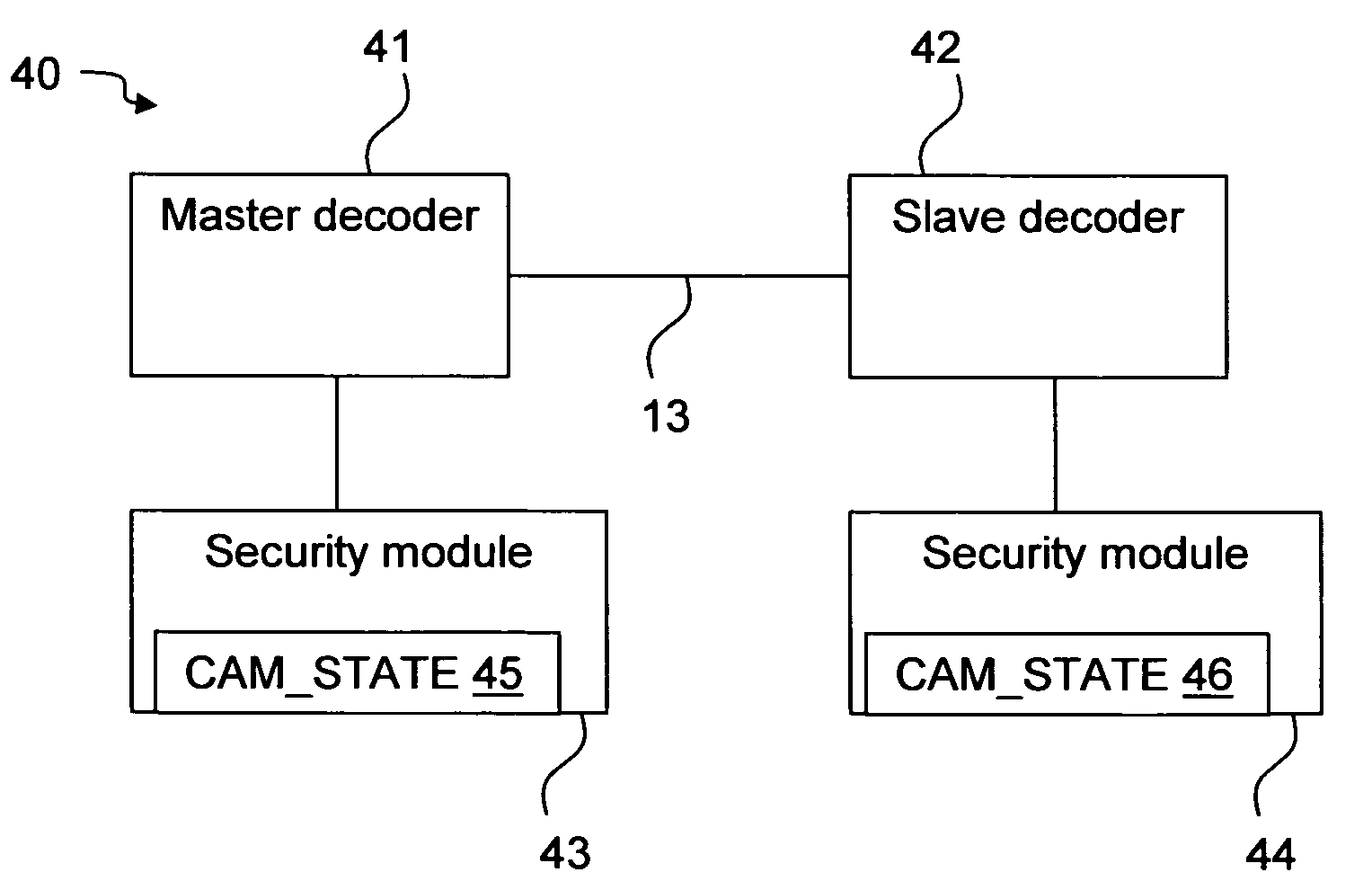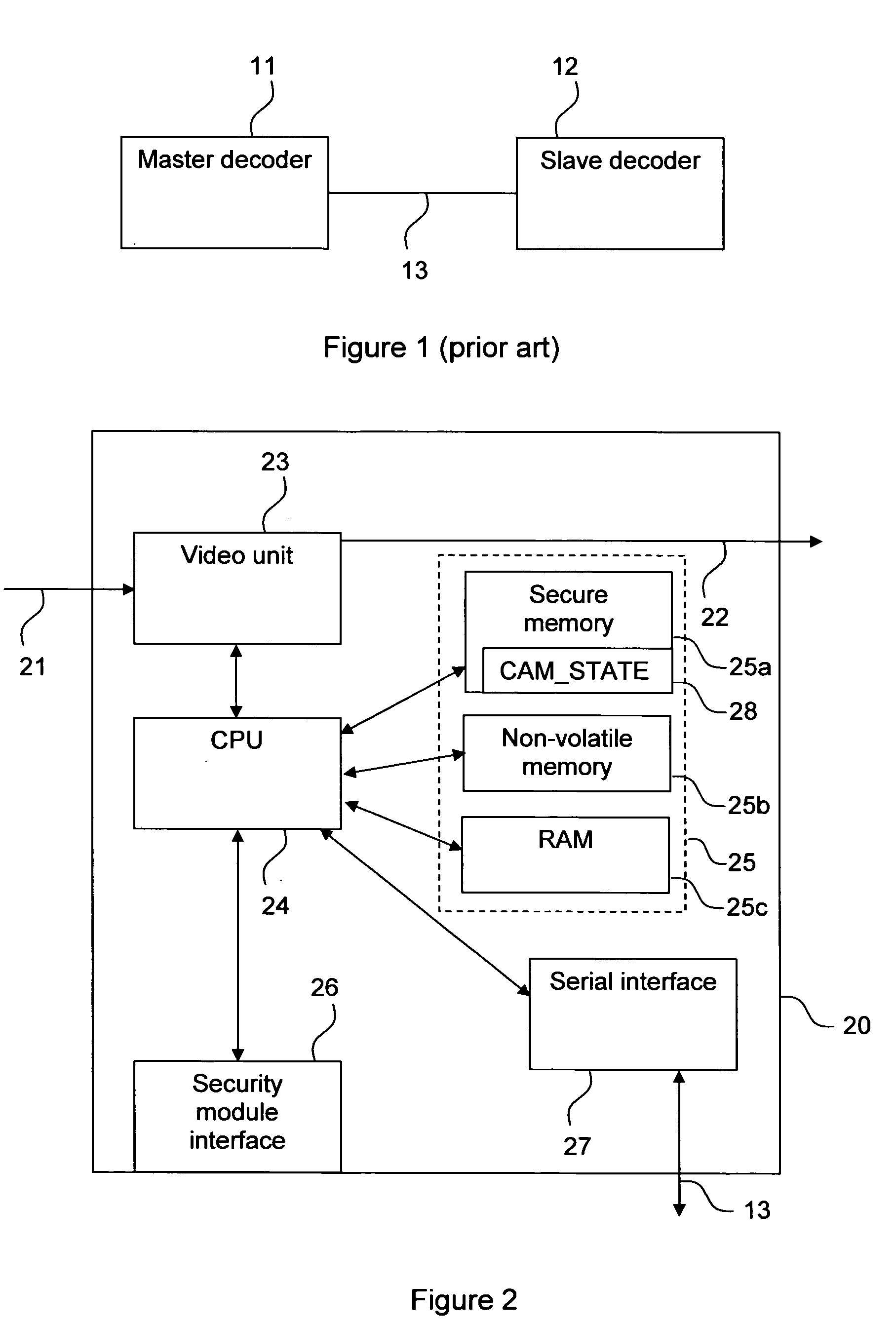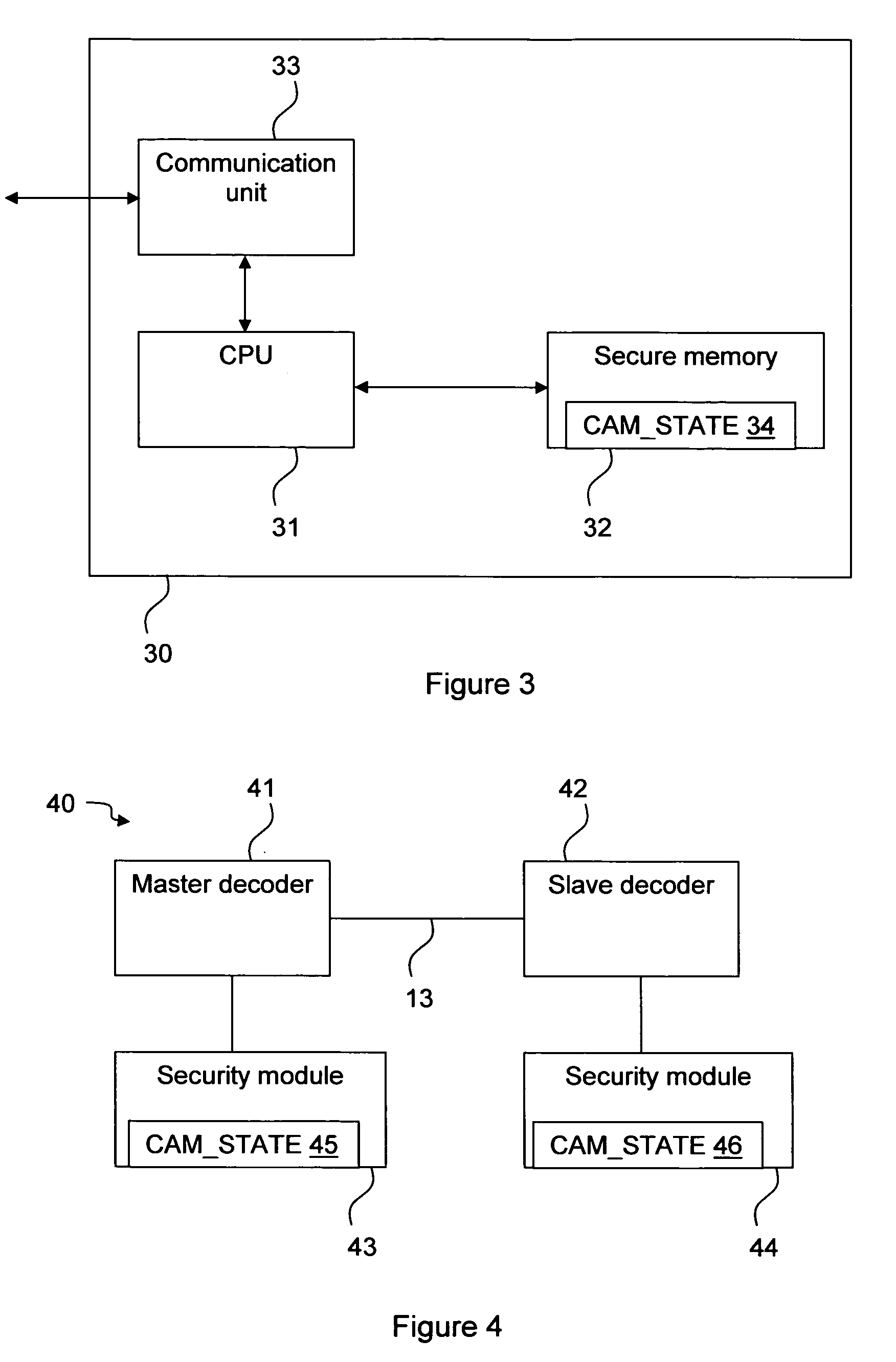Device pairing
a technology of devices and pairing, applied in the field of devices pairing, can solve the problems of poor video quality, inability to use, impracticality, if not unusability, etc., and achieve the effect of further enhancing security
- Summary
- Abstract
- Description
- Claims
- Application Information
AI Technical Summary
Benefits of technology
Problems solved by technology
Method used
Image
Examples
Embodiment Construction
[0036]FIG. 2 is a simplified illustration of the architecture of a preferred embodiment of a decoder 20 according to the invention. The decoder 20 comprises a Central Processing Unit (CPU) 24, a video unit 23, a security module interface 26 advantageously in the form of a ISO-7816 compliant smart card interface, a serial interface 27, and memory 25, advantageously in the form of a secure, non-volatile memory 25a, a non-volatile memory25b, and a Random Access Memory (RAM) 25c. The video unit 23 receives the video stream through an incoming connection 21, extracts Entitlement Control Messages (ECMs) and Entitlement Management Messages (EMMs), and passes them to the CPU 24 to be forwarded via the security module interface 26 to the security module (not shown in this figure). The video unit 23, if authorised by the security module, also descrambles the video stream and outputs it on connection 22, normally connected to a display (not shown). The security module interface 26 realises the...
PUM
 Login to View More
Login to View More Abstract
Description
Claims
Application Information
 Login to View More
Login to View More - R&D
- Intellectual Property
- Life Sciences
- Materials
- Tech Scout
- Unparalleled Data Quality
- Higher Quality Content
- 60% Fewer Hallucinations
Browse by: Latest US Patents, China's latest patents, Technical Efficacy Thesaurus, Application Domain, Technology Topic, Popular Technical Reports.
© 2025 PatSnap. All rights reserved.Legal|Privacy policy|Modern Slavery Act Transparency Statement|Sitemap|About US| Contact US: help@patsnap.com



